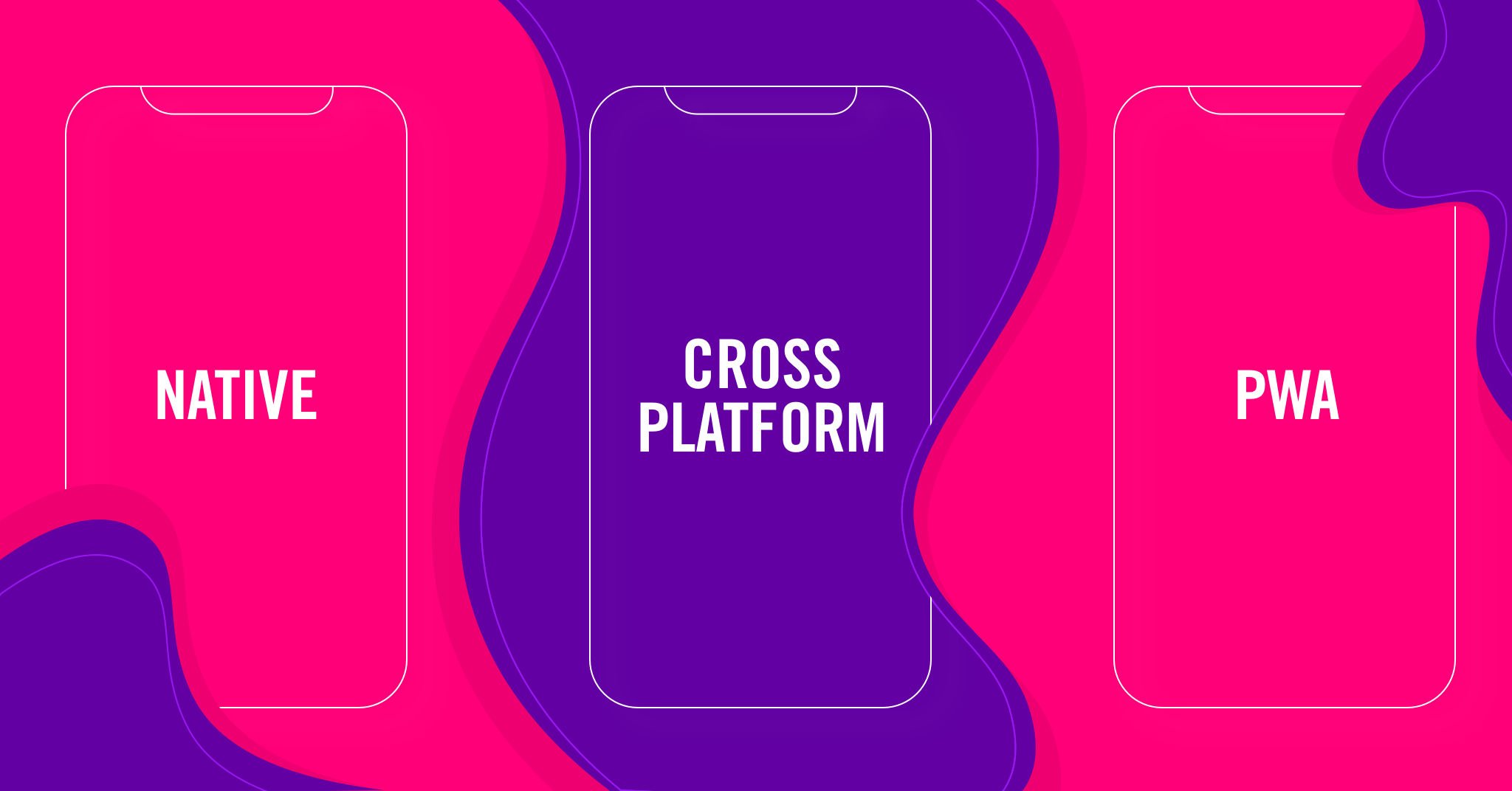Key Features for a Successful Fintech App in 2023

Gareth Smith
1. Introduction to Fintech 2023 Trends
In 2023, the Fintech landscape is expected to be radically transformed, driven by both emerging technologies and evolving consumer demands. With the rapid advancement of data analytics, blockchain, AI and mobile technology, Fintech apps are not only supposed to manage transactions but also offer personalized services. In an increasingly digital world, these apps lead the way in revolutionizing the financial sector. Hence, it’s crucial to understand the key features that ensure a Fintech app’s success in this dynamic environment.
Influence of fintech trends on the development of a successful Fintech App
Fintech trends significantly influence the development of successful fintech apps. As we head towards 2023, the intersection of technology and finance continues to evolve at a rapid pace, driving app developers to keep up with the latest industry trends to stay competitive.
Blockchain and AI technologies have moved to the forefront, revolutionizing the fintech landscape. Utilizing these technologies enhances apps’ security, privacy, and speed, key features for any successful fintech app. Blockchain, for instance, can reduce the potential for fraud by keeping immutable transaction records, while AI can streamline complex processes, like risk assessments, and improve customer service through chatbots.
Additionally, the rise in mobile banking and contactless payments continue to shape user expectations. Consumers now seek seamless, intuitive interfaces and immediate, 24/7 access to their financial transactions. Hence, a successful fintech app would need to embrace these consumer preferences and offer comprehensive mobile banking features.
In conclusion, future fintech app development is greatly affected by industry trends. The key to a successful fintech app lies in striking a balance – harnessing advanced technologies like AI and blockchain, while ensuring user-friendly design and operation.
Understanding the need of key features in Fintech App
Understanding the need for key features in a Fintech app is paramount to its success. In an age where digital finance solutions are growing in popularity, the demand for seamless, secure, and efficient financial technology applications is more substantial than ever. These applications are reshaping the traditional financial services sector, offering a more integrated and convenient way for users to manage their finances.
The key features of a Fintech app play a significant role in defining its functionality and user experience. It is these features that allow for such apps to stand out in a saturated market and meet the evolving needs and preferences of modern-day customers. From advanced security systems to personalized experiences, these features not only enhance the overall functionality of the app but also contribute to its value proposition. In the competitive landscape of Fintech, understanding these key features is not just beneficial; it’s essential for positioning a Fintech app for success in 2023 and beyond.
2. Core features of a Fintech App
Two core features that are critical for a successful fintech app in 2023 are high-level security and user experience. Security is pivotal in ensuring the protection of the user’s financial and personal data, and it creates trust between the user and the app. A secure app employs robust encryption, biometrics, and multi-factor authentication to prevent data breaches. On the other hand, user experience impacts onboarding, engagement, and customer loyalty. An intuitive design, seamless navigation, real-time notifications, and personalization can significantly enhance the user experience. Users demand simplicity and convenience, so designing with the user in mind is key for success.
Mobile Payments and Digital Wallet
The advent of fintech has transformed the way transactions are conducted, and in 2023, mobile payments continue to be at the heart of this revolution. Enabling instant, seamless transactions, right from your smartphone, mobile payments make traditional wallets obsolete. A successful fintech app in 2023 ought to have a robust mobile payments feature that is fast, secure, and user-friendly.
Incorporating features like NFC (Near Field Communication), QR codes, and biometric authentication can augment the user experience, making transactions smoother and faster. Moreover, phone-to-phone transactions via UPI (Unified Payments Interface) or contactless payments are expected to become the norm.
Digital wallets are another key to a successful fintech app. Beyond just storing credit and debit card information, the digital wallet of 2023 is a complete financial tool. It allows users to integrate multiple bank accounts, conduct cross-border transactions, pay bills, invest in stocks, and even purchase cryptocurrencies. Enhanced security features like encryption, tokenization, and biometric identification not only offer users peace of mind but also compliance with financial regulations.
In conclusion, for a fintech app to be successful in 2023, it must offer a comprehensive mobile payment and digital wallet solution that caters to the evolving needs of the digital-savvy consumer.
Peer-to-Peer Transfers and Personal Finance Management
Peer-to-Peer (P2P) transfers have emerged as an essential feature for Fintech apps in the near future. The advantage of P2P transfers is its immediacy, simplicity, and cost-effectiveness. Users can easily transfer funds to each other with a few simple taps, eliminating the need for visiting banks or ATMs. In 2023, it is expected that successful Fintech apps will offer highly secure, rapid, and seamless P2P transfers with user-friendly interfaces. Additionally, the integration of blockchain technology might add another layer of security and transparency to P2P transactions.
Personal Finance Management is another key feature for a successful Fintech app in 2023. The ability to track income, expenses, and savings all in one place is a critical convenience for tech-savvy users. Fintech apps offering this feature should leverage AI-based algorithms to analyze spending habits, offer budgeting advice, or give alerts about upcoming bills. Innovative features such as ‘smart savings’ or ‘micro-investing’ where the app rounds up purchases and invests the spare change, may also appeal to users. In essence, the Personal Finance Management feature should become a proactive financial advisor, helping users take control of their financial health in a fast-paced digital economy.
Security Features for safe transactions
In the evolving landscape of financial technology, the importance of robust security features cannot be overstated. Spectacular advancements in Fintech applications are all for naught without the comprehensive protection of user data and financial transactions. For a Fintech app to be successful beyond 2023, it must be fortified with a robust line of defense against cyber threats.
Key security features should include end-to-end encryption which ensures that data traveling between two communicating parts cannot be intercepted and decrypted. Multi-factor authentication is another crucial aspect. This may include traditional passwords combined with fingerprint recognition or facial recognition technology, making it incredibly difficult for unauthorized users to gain access.
Furthermore, the app’s security model should be dynamic and responsive, i.e., it should continuously monitor user behavior to detect any anomalies that may suggest a security breach. This is achieved by implementing advanced predictive algorithms and AI-powered fraud detection systems. Additionally, to ensure secure transactions, blockchain technology could be employed for its decentralized nature and traceability.
In conclusion, secure transactions within a Fintech app are not just about password protection but also a combination of advanced technologies and sophisticated authentication models. An app that prioritizes security will foster trust among its users, thus paving the path for its success in a highly competitive market.
3. Advanced Features for a Successful Fintech App
In 2023, a successful fintech app will need to incorporate advanced features to keep pace with its tech-savvy users. Among these features, automated financial advice or robo-advisors will be crucial. Incorporating AI algorithms, they will offer personalized advice and investment strategies. Second, voice-command systems powered by AI will be pivotal for seamless navigation, providing users hands-free control over their financial management. Lastly, predictive analytics can maximize user experience; by analyzing patterns and behavior, the app can provide tailored suggestions for saving, investment, and spending.
Use of Blockchain and Artificial Intelligence in Fintech
The integration of Blockchain and Artificial Intelligence (AI) in a Fintech app can bring about transformational changes in 2023. Blockchain, a decentralized ledger, ensures data security and transaction transparency, which is crucial in the Fintech sector. It can minimize fraud cases, expedite secure and real-time transactions, automate compliance, and reduce operational costs through smart contracts. By curbing intermediaries, Blockchain can enhance efficiency and build trust among users.
On the other hand, AI plays a pivotal role in analyzing huge piles of data to provide personalized services. Through machine learning and predictive analysis, AI can help in understanding user behavior, identifying spending patterns, and predicting future trends. This data can be instrumental in providing custom recommendations, enhancing customer engagement, preventing fraud, and improving risk management. With AI-powered chatbots, instant customer service can become a reality, significantly boosting user experience.
Incorporating blockchain and AI can revolutionize a Fintech app, making it more secure, intelligent, and user-friendly, essential features for successful Fintech applications in 2023. The combination of these technologies surely promises a promising future for the Fintech industry in the coming years.
Real-time analytics, Investment Platform, and Insurtech Features
With the ever-evolving financial landscape, real-time analytics has taken center stage in fintech apps. Users in 2023 expect a more dynamic, real-time analysis of their financial data. An ideal fintech app should provide actionable insights in real-time, such as transaction categorization, spending habits tracking, credit score monitoring, and predictive analysis. Real-time analytics enable users to promptly respond to market changes, optimize budgets, and make strategic investment decisions. Integration of AI and machine learning can further enhance this feature by automating data analysis and generating personalized financial advice.
In the realm of investment platforms, seamless user experience is paramount. The success of a fintech app in 2023 lies in its ability to simplify the investment process. This includes integrating portfolio management tools, performance tracking, and providing safe and simple methods for users to buy or sell stocks, bonds, or mutual funds. A well-designed app would offer educational resources for beginners, expert insights for seasoned investors, and employ advanced algorithms to provide personalized investment recommendations.
Lastly, insurtech features bring added value to a fintech app. Features like policy management, claim processing, and digital underwriting can transform the insurance experience for users. By leveraging advanced technologies like blockchain, AI, and IoT, fintech apps can enable real-time policy updates, streamline claim settlements, and even automate premium calculation based on user behavior and risk profile. As consumers increasingly demand a more digital, seamless, and personalized insurance experience, incorporating insurtech features can significantly determine the success of a fintech app in 2023.
Cross-platform compatibility and user-friendly Interface (UI) for Fintech
In an increasingly mobile-first world, Fintech solutions that encompass cross-platform compatibility are more important than ever. As we enter 2023, these apps must run seamlessly across various platforms such as Android, iOS, and even web applications to ensure a broad reach. By developing a cross-compatible app, Fintech companies can provide their customers with a consistent experience, regardless of their choice of device or operating system. Given the diversity in user device preferences, this feature is no longer an option but a necessity for successful Fintech apps.
Meanwhile, a user-friendly interface (UI) is a crucial factor in keeping users engaged and satisfied. As Fintech solutions provide complex financial services like banking, investments, and insurance, a simple, intuitive, and attractive UI can make these services accessible to a wide range of users, irrespective of their tech-savviness. As we navigate through 2023, Fintech apps should prioritize incorporating a seamless and easy-to-navigate interface, as this can drastically improve user adoption rates, boost customer satisfaction, and consequently, positively impact their bottom line.
4. Impact of Fintech Regulations on App Development
The impact of fintech regulations on app development is undeniable. Compliance with regulatory frameworks such as GDPR, PSD2, and various data security standards is not optional but a requirement for operating in the fintech space. These regulations compel developers to consider key aspects like data privacy, user consent, and ethical usage of AI, forming the backbone of their design process. Despite being viewed as constraints, they can also be a vehicle for trust-building, as transparency and user protection become selling points in the eyes of savvy consumers.
Legal aspects to consider while creating a Fintech App
In the ever-evolving digital landscape of Fintech, it’s crucial to consider the legal aspects when developing a cutting-edge Fintech app in 2023. As Fintech bridges the gap between financial services and technology, it falls under the scrutiny of various national and international laws, statutes, and regulations.
Data Privacy is one of the primary legal concerns in this realm. Laws like the General Data Protection Regulation (GDPR) in Europe, the California Consumer Privacy Act (CCPA) in the U.S., and other similar laws worldwide mandate stringent data privacy and security norms. Therefore, it’s essential to incorporate robust data protection measures and consent mechanisms within your app to ensure legal compliance.
Moreover, depending upon the specifics of your Fintech application’s functionality, it may be subject to financial regulations as well. For instance, in the U.S., if your platform involves activities related to payments or transfers, you may need to comply with the regulations imposed by the Consumer Financial Protection Bureau (CFPB) or the Financial Crimes Enforcement Network (FinCEN).
Additionally, transparency in advertising and providing accurate information to customers about the product offerings is mandatory under consumer protection laws. Therefore, all app-provided information must be clear, comprehensive, and not misleading.
Lastly, intellectual property rights (IPRs) such as patent, copyright, or trademark laws should also be contemplated while developing your Fintech app to protect the proprietary technology or idea behind your app.
By adhering to these legal requirements, you increase trust and confidence among your users while mitigating the risk of potential legal retributions.
Importance of abiding regulations for a successful Fintech App
Regulatory compliance is crucial to the success of any Fintech app. In the rapidly evolving world of Fintech, a comprehensive understanding of the global and local regulations is not just a mandatory requirement but also a competitive business advantage. By 2023, Fintech companies will have to navigate an increasingly complex web of legal considerations pertaining to data privacy, security, anti-money laundering, and financial stability.
Failure to comply with these regulations can lead to hefty fines, reputational damage, and loss of customer trust, all of which could spell the end for a Fintech app. On the other hand, regulatory compliance can foster trust among users, investors, and other stakeholders, boosting the app’s reputation and credibility in the market.
As financial services become more digitized, customers are increasingly concerned about the safety of their data and finances. A Fintech app that not only complies with regulations but goes the extra mile to ensure data privacy and financial security will stand out in a highly competitive market. Therefore, abiding by regulations is not just about doing the minimum necessary to avoid sanctions but a strategic move that can improve a Fintech app’s prospects for success.
5. Summary
In summary, a successful fintech app in 2023 will feature cutting-edge security measures ensuring customers’ digital safety. Enhanced user interface and user experience design are key, as are fast and efficient services. Integration capabilities enable cooperation with other systems, crucial for smooth operations. Big data analysis and AI implementation will provide personalized customer experiences, improve decision-making processes and elevate the app’s performance. The future of fintech apps in 2023 is shaping up to be sophisticated, customer-centric, and highly secure.
Combination of key features leading to Fintech Innovation
In the rapidly evolving world of fintech, the combination of certain key features often leads to groundbreaking innovation. One crucial aspect in this mix is user-experience (UX) design, a central pillar of successful fintech apps. UX design focuses on creating an intuitive, simple, and pleasant journey for users, reducing friction and boosting customer engagement. By 2023, it’s anticipated that UX design will leverage advanced technologies like AI and machine learning to predict user needs and tailor personalized experiences.
Another fundamental feature is robust security. Given the sensitive financial data involved, fintech apps must make security a top priority. Advanced encryption, multi-factor authentication, and biometrics are anticipated to become standard features in the fintech security landscape by 2023.
Thirdly, interoperability is another key aspect to consider. Fintech apps should be able to communicate effortlessly with other financial systems, databases and services. By integrating APIs, fintech apps can offer a seamless service where users can manage their finances from one single place.
In essence, the perfect fusion of superior UX design, robust security, and seamless interoperability are set to define the fintech apps of the future, propelling the industry forward and transforming the financial landscape of 2023.
Anticipating User Experience (UX) for Fintech in the year 2023
In 2023, the Fintech landscape is expected to be even more customer-centric, with a significant focus on enhancing User Experience (UX). Anticipating and fulfilling user needs will drive the success of Fintech apps in the future.
Fintech apps will continue to evolve, aiming to provide an intuitive, seamless, and personalized experience. As AI and machine learning mature, we can expect these apps to better understand user behavior, anticipate their needs, and offer individualized support and recommendations. For instance, real-time, predictive analytics can help alert users to potential investment opportunities or warn them about potential financial risks.
Moreover, UX design will focus on simplifying complex financial transactions and making them more understandable to a wide spectrum of users. Simplified navigation, clear visualizations, and interactive elements can help demystify financial services and make finance management more attainable for everyone.
Lastly, but certainly not least, security will be top-notch. As users entrust their sensitive financial information to these apps, ensuring a secure, trustworthy experience is paramount. Fintech apps in 2023 will employ advanced security precautions, such as biometric authentication and encryption, to safeguard users’ privacy and funds.
In conclusion, the future of Fintech apps lies in a thoughtful, anticipatory UX design that prioritizes personalization, simplicity, and security – paving the way for a more user-friendly financial future.





